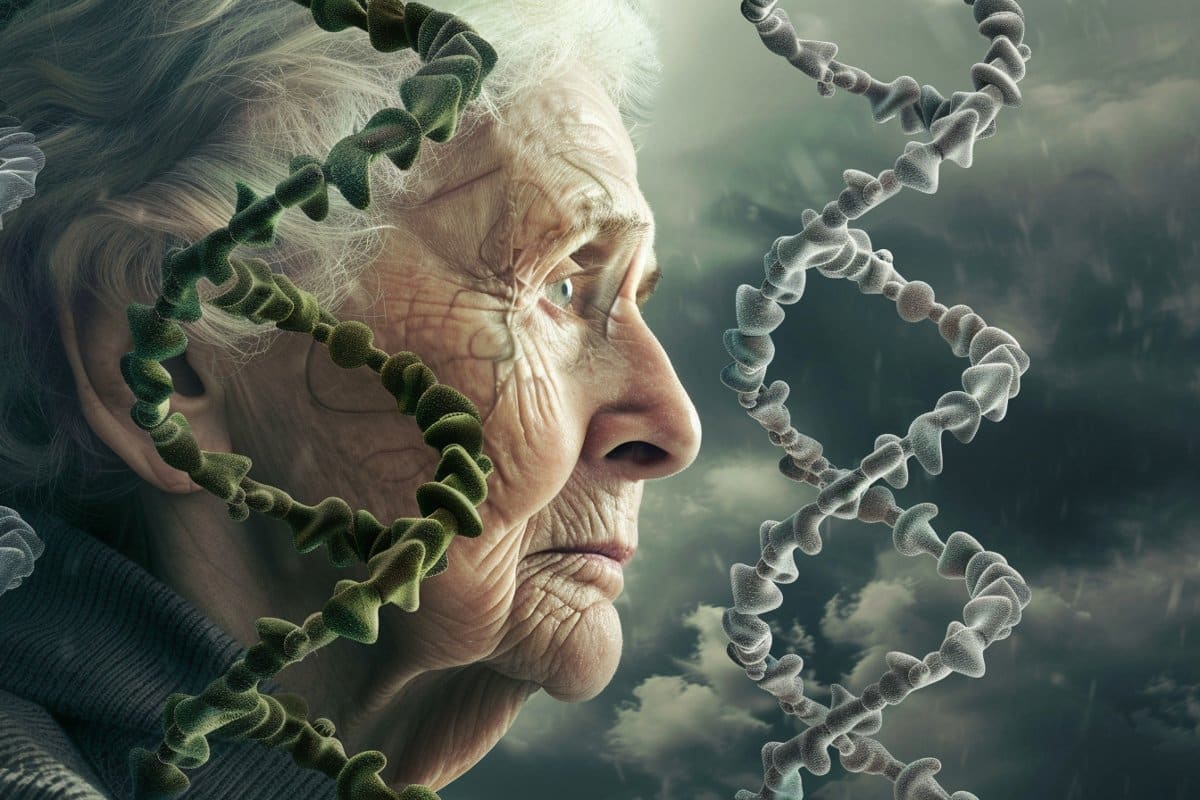Summary: Four independent studies converge on the groundbreaking conclusion that the activity of long genes may be the key driver behind aging. This insight, marking a significant shift from traditional gene-specific aging theories, suggests that conditions affecting long gene activity, like smoking or caloric restriction, can accelerate or slow down aging, respectively.
The research also highlights a connection between long genes and neurodegenerative diseases, such as Alzheimer’s, offering new perspectives on disease causation and aging. The studies’ collective findings, demonstrating that longer genes are more susceptible to damage over time, pave the way for innovative aging and disease treatment strategies.
Key Facts:
- Long Genes at Aging’s Core: The activity of long genes, which decreases with age, is identified as a central cause of aging, connecting most existing aging knowledge into a single, measurable phenomenon.
- Lifestyle Impacts on Gene Activity: External factors like smoking and UV exposure reduce long gene activity, accelerating aging, whereas practices like caloric restriction enhance long gene activity, slowing aging processes.
- Implications for Neurodegenerative Diseases: The study suggests that the decreased activity of long genes, particularly those crucial for neural function, might underpin neurodegenerative conditions such as Alzheimer’s disease, as these cells fail to maintain essential biomaterials for neural health.
Source: Northwestern University
What causes our body to age? Four complementary studies, including one from Northwestern Medicine, have come to the same conclusion: long genes.
In a new paper, the scientists write about their findings and how they advance existing knowledge about aging.
“Long genes that become less active with age may be the central cause of aging in our bodies,” said co-corresponding author Thomas Stoeger, assistant professor of medicine in pulmonary and critical care at Northwestern University Feinberg School of Medicine and a member of the Potocsnak Longevity Institute.

“Our finding advances the field by identifying a single phenomenon that connects most existing knowledge about aging and makes this underlying phenomenon measurable.”
The paper, which highlighted the shared findings of four international research groups, was published in Trends in Genetics on March 21.
The groups are the first to arrive at the conclusion that most aspects of biological aging relate to gene length.
Conditions known to accelerate aging decrease the activity of long genes. This includes smoking, alcohol, oxidative stress and UV-irradiation. Conditions known to slow aging increase the activity of long genes such as caloric restriction.
Also, genes that are very short or very long encode for cellular processes known to change in aging such as the formation of cellular energy, protein synthesis and transmission of neural signals.
“The regulation of genes is one of the most central processes of life, and our four studies explain why the activity of long genes in particular change in aging,” Stoeger said. “In addition to aging, we show that the same finding occurs in patients with Alzheimer’s disease, an age-associated disease.
“Our findings help us rethink causes of neurodegenerative diseases such as Alzheimer’s disease. Because genes with neural function are unusually long, we hypothesize that the decreased activity of long genes cells fails to produce sufficient biomaterials to properly maintain neural function.”
The trigger of aging is a physical phenomenon related to the length of the genes and not to the specific genes involved or the function of those genes, the scientists report. The original findings were based on a mixture of molecular data from humans, mice, rats, killifish, C. elegans, D. melanogaster and experiments in mice.
Previously scientific research sought to identify specific genes responsible for aging. This new view differs from prevailing biological approaches that study the effects of single genes.
Long genes simply have more potential sites that could be damaged. The scientists compare it to a road trip — the longer the trip, the more likely that something will go wrong. And because the physiological roles of some cell types rely upon genes that are longer than those of other cell types, some cell types are more likely to be affected by DNA damage that accumulates as they age.
During aging, genes take damage as the strands of DNA that contain the genes break. This stops cells from reading the information and activating the information contained in the gene. The longer the gene, the more likely it is that at least one DNA damage site exists and stops the gene’s activation.
Because neural cells are known to rely on particularly long genes and are slow or non-dividing, they are especially susceptible to the phenomenon. Many of the genes involved in brain loss during aging and associated with Alzheimer’s disease are exceptionally long.
Pediatric cancer patients, who are cured by DNA-damaging chemotherapy, later suffer from premature aging, including neurodegeneration.
The title of the article is “Time is ticking faster for long genes in aging.”
Funding: The research from Northwestern was supported by grant R00AG068544 from the National Institute on Aging of the National Institutes of Health.
About this aging and genetics research news
Author: Marla Paul
Source: Northwestern University
Contact: Marla Paul – Northwestern University
Image: The image is credited to Neuroscience News
Original Research: Open access.
“Time is ticking faster for long genes in aging” by Thomas Stoeger et al. Trends in Genetics
Abstract
Time is ticking faster for long genes in aging
Recent studies of aging organisms have identified a systematic phenomenon, characterized by a negative correlation between gene length and their expression in various cell types, species, and diseases.
We term this phenomenon gene-length-dependent transcription decline (GLTD) and suggest that it may represent a bottleneck in the transcription machinery and thereby significantly contribute to aging as an etiological factor.
We review potential links between GLTD and key aging processes such as DNA damage and explore their potential in identifying disease modification targets.
Notably, in Alzheimer’s disease, GLTD spotlights extremely long synaptic genes at chromosomal fragile sites (CFSs) and their vulnerability to postmitotic DNA damage. We suggest that GLTD is an integral element of biological aging.






